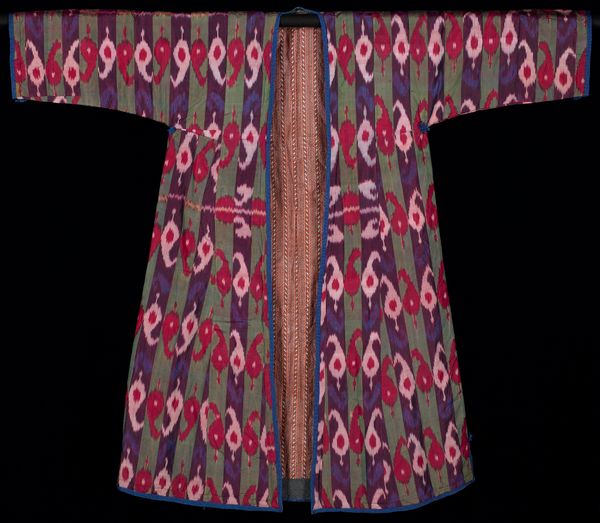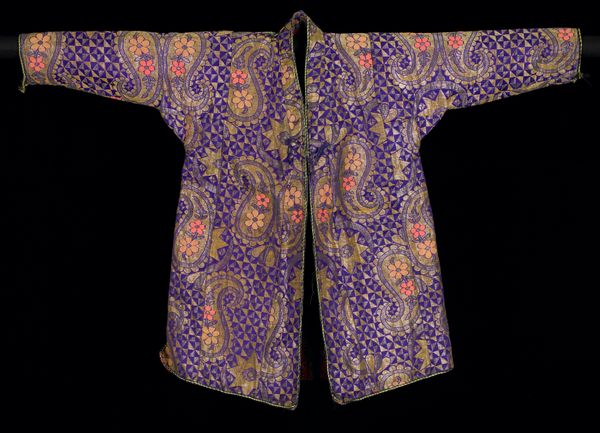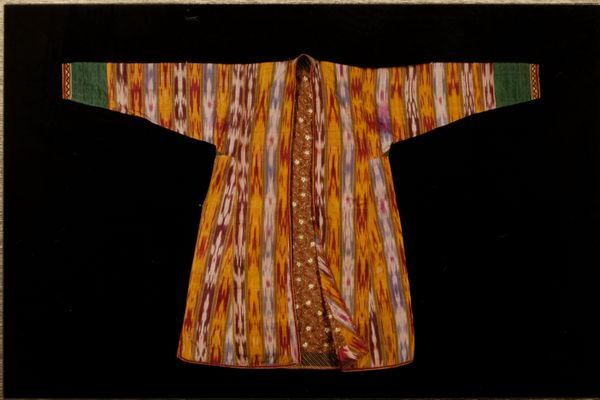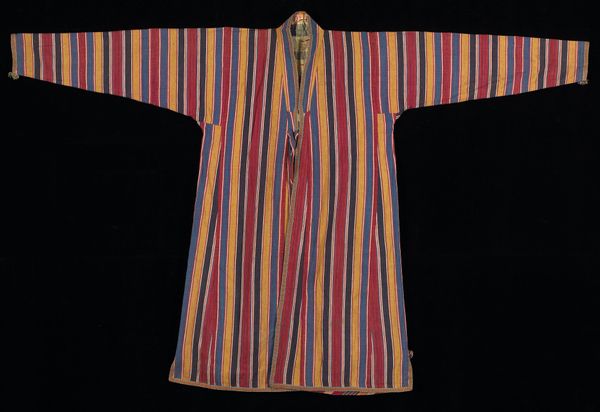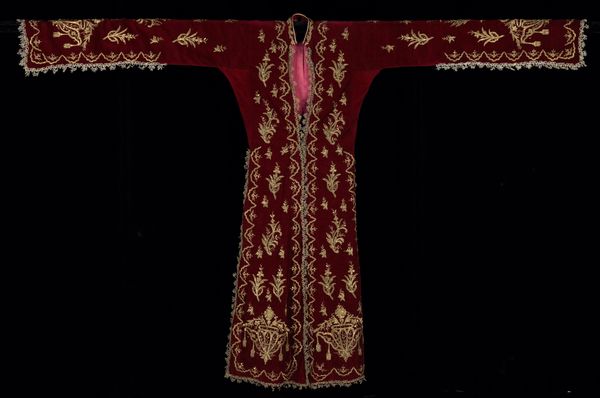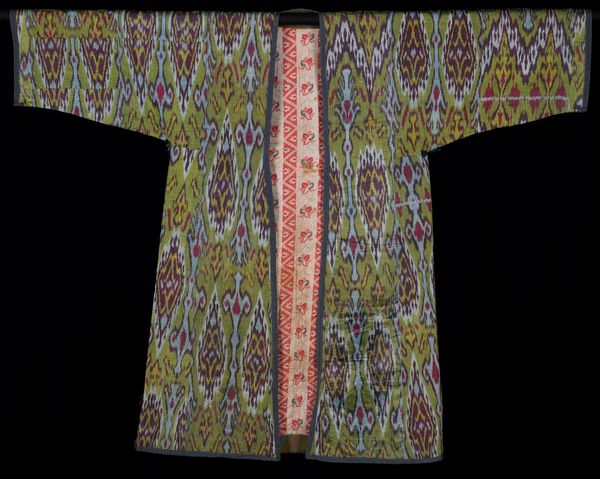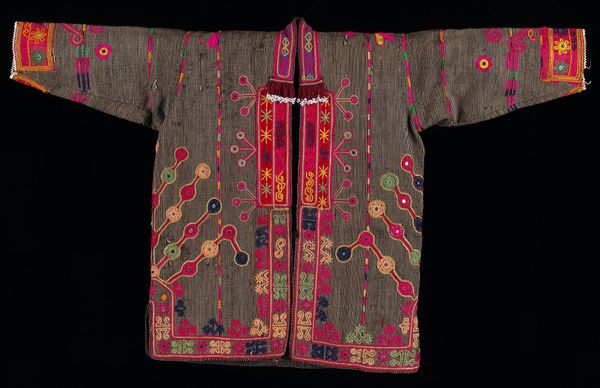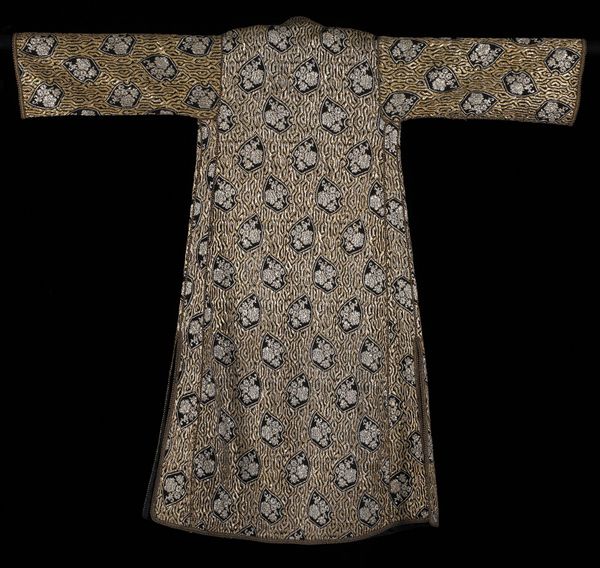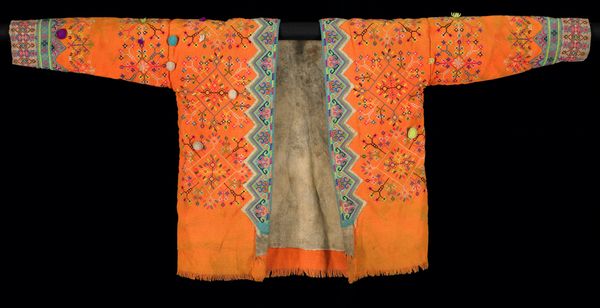
ornament, silk, weaving, textile, cotton
#
ornament
#
silk
#
asian-art
#
weaving
#
textile
#
cotton
#
textile design
#
decorative-art
Dimensions: 52 x 63in. (132.1 x 160cm)(shoulder to bottom edge, cuff to cuff)
Copyright: Public Domain
Editor: So, here we have an artwork simply titled “Coat,” likely crafted sometime between 1890 and 1900. It's a vibrant textile piece made from silk and cotton, now residing here at the Minneapolis Institute of Art. I am immediately drawn to the dazzling ikat pattern! What's particularly striking to you when you observe this piece? Curator: The patterns certainly jump out, don't they? This isn’t just a coat; it's a cultural object embedded in complex trade routes and social hierarchies. These types of coats, often referred to as "Chopans," were a symbol of status and wealth in Central Asia. Who do you imagine would have worn something like this? Editor: Someone wealthy, for sure, or perhaps a high-ranking official? Was there significance to the pattern, perhaps linked to their social position? Curator: Exactly! The designs weren't arbitrary. Ikat, the weaving technique, itself demanded specialized skill and resources, influencing its value. More broadly, consider the global silk trade and its implications for cultural exchange. What does the coat’s presence in an American museum like Mia suggest about the history of collecting and the preservation of cultural heritage? Editor: I see your point; it highlights the journey these objects undertake – from being everyday or ceremonial wear for some, to museum exhibits elsewhere. How were such textiles initially viewed and valued, before entering a Western museum context? Curator: Originally, their value resided in their functionality, craftsmanship, and symbolic association within their originating cultures. But, by the late 19th century, such textiles gained value as art objects for Western collectors, which arguably transformed their meaning and purpose. How do we balance celebrating such artistry while also being mindful of their historical and social contexts? Editor: That's quite a challenging question! It really changes my perspective. Seeing it as more than a beautiful garment, but an emblem of complex social, political and art-historical issues that affect society as a whole. Curator: Precisely, recognizing that art is rarely 'just' art, but a confluence of cultural forces.
Comments
No comments
Be the first to comment and join the conversation on the ultimate creative platform.

